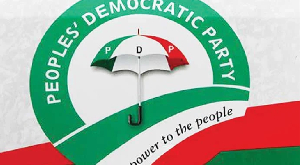Governments at all levels rely on revenue to fund the various services and programs they provide to citizens. These services vary from education and health care to infrastructure and public safety. To keep up and improve these services, governments should realize ways to come up with ample revenue.
One common means for increasing income is through the implementation of higher taxes. However, raising taxes is often a debatable and politically sensitive issue, and it can even have negative impacts on the economy and individual taxpayers. As a result, governments often seek alternative ways to increase revenue without raising taxes.
In this write-up, we are going to explore five ways that governments can use to increase revenue generation without the need to raise taxes. These ways embody increasing efficiency in tax collection, expanding the tax base, implementing user fees and charges, developing public-private partnerships, and selling off some government assets. By examining the pros and cons of each method, we can better understand the potential for revenue generation without resorting to tax increases.
I. Increasing Efficiency in Tax Collection
One way that governments can increase revenue without raising taxes is by increasing their efficiency in tax collection. There are several measures that governments can adopt to attain this:
1. Streamlining tax administration: Governments can simplify tax forms and processes to make it easier for people and businesses to file and pay taxes. This will scale back the burden on taxpayers and increase compliance.
2. Enhancing tax enforcement: Governments should implement measures to enforce compliance with tax laws, like increased audits and penalties for non-compliance. This will ensure that everyone performs their tax obligation as required of them by the law.
3. Improving data management: By investing in better technology and data management systems, governments can more accurately track tax payments and identify potential areas for improvement.
Examples of successful implementation of this method include the implementation of online tax filing systems, which have made it easier for individuals to file their taxes and have increased compliance rates. In addition, many governments have implemented automated systems for tracking and collecting taxes, which have helped to reduce errors and increase efficiency.
II. Expanding the Tax Base
Another way that governments can increase revenue without raising taxes is by expanding the tax base. This can be done by increasing the number of taxable entities, such as by requiring more businesses or individuals to pay taxes.
The potential benefits of expanding the tax base include increased revenue and greater fairness in the tax system, as a larger number of taxpayers can help to spread the burden of taxation more evenly. However, there are also potential drawbacks to consider. For example, expanding the tax base may be seen as unfair to those who are newly subjected to taxation, and it may also lead to increased compliance costs for the government. In addition, expanding the tax base may be challenging in practice, as it may require changes to tax laws and the development of new systems for tracking and collecting taxes from a larger number of taxpayers.
III. Implementing User fees and Charges
User fees are fees that governments impose on individuals or organizations in exchange for a specific service or benefit. These fees can be used to generate revenue for the government without requiring a tax increase.
Examples of user fees and charges that governments can implement include:
Service fees: Governments can charge fees for specific services, such as building permits or business licenses.
Tolls: Governments can charge tolls for the use of certain roads or bridges.
Utility fees: Governments can charge fees for the use of public utilities, such as water and sewage systems.
Environmental fees: Governments can charge fees for activities that have an environmental impact, such as the disposal of hazardous waste.
The potential benefits of user fees and charges include the ability to generate revenue without raising taxes, as well as the ability to incentivize the use of certain services or behaviours.
For example, charging a fee for the disposal of hazardous waste may encourage individuals and businesses to properly dispose of such materials, which can have positive environmental impacts. However, there are also potential drawbacks to consider. User fees and charges may be seen as unfair by some, as they can disproportionately impact certain groups or industries.
In addition, the implementation of user fees and charges may require the development and maintenance of new systems for tracking and collecting fees, which can be costly.
IV. Developing Public-Private Partnerships
Another way that governments can generate revenue without raising taxes is through the development of public-private partnerships (PPPs). In a PPP, the government partners with a private sector organization to jointly develop and operate a project or service. The private sector partner typically contributes funding, expertise, or other resources in exchange for the opportunity to participate in the project or service.
The potential benefits of PPPs include the ability to tap into private sector resources and expertise, as well as the potential for cost savings through the sharing of risks and responsibilities. However, there are also potential drawbacks to consider. PPPs may be seen as giving private sector organizations undue influence over public services, and there may be concerns about accountability and transparency. In addition, PPPs may require the development of complex contracts and agreements, which can be time-consuming and costly.
V. Selling Government Assets
Another way that governments can increase revenue without raising taxes is by selling some government assets. These assets can include real estate, such as land or buildings, as well as financial assets, such as investments or stocks.
Examples of government assets that can be sold to generate revenue include:
Surplus land or buildings: Governments can sell excess or underutilized land or buildings to generate revenue.
Investment portfolios: Governments can sell stocks, bonds, or other financial assets that are held in investment portfolios.
Natural resources: Governments can sell the rights to extract natural resources, such as oil or minerals, on public lands.
The potential benefits of selling government assets include the ability to generate a one-time influx of revenue without raising taxes. In addition, selling excess or underutilized assets can help to reduce costs and improve efficiency.
However, there are also potential drawbacks to consider. Selling government assets may be seen as a short-term solution that does not address long-term revenue needs, and it may also be controversial if the assets in question are seen as having historical or cultural value.
VII. Conclusion
In conclusion, governments have a variety of options for increasing revenue without raising taxes. These options include increasing efficiency in tax collection, expanding the tax base, implementing user fees and charges, developing public-private partnerships, and selling government assets. Each of these methods has its benefits and drawbacks, and it is important for governments to carefully consider the best approach for their specific needs and circumstances.
Ultimately, the key to successful revenue generation without raising taxes is finding the right balance between fairness, efficiency, and sustainability.
Opinions of Tuesday, 10 January 2023
Columnist: Saint Michael Mills-Pappoe














